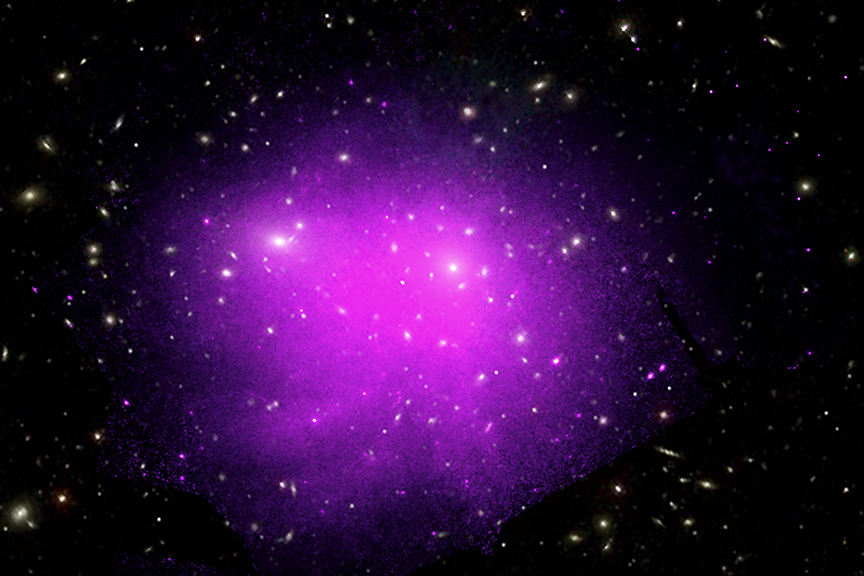Like Milk or Honey? Scientists Investigate the State of Hot Gas in Galaxy Clusters
A new study measures the viscosity of hot gas in galaxy clusters.

A group of scientists set out to learn whether hot gas in galaxy clusters is as thick as honey sliding off a spoon or as smooth as milk being stirred in a coffee cup.
The result is a recent study that looked at how hot gas found in the Coma galaxy cluster behaves by using two weeks of observations from NASA's Chandra X-ray Observatory. The researchers observed that despite being abundant in the galaxy cluster, the hot gas had low viscosity (so more like milk).
"Our finding suggests that gas viscosity in Coma is much lower than expected," Irina Zhuravleva, a researcher at the University of Chicago and lead author of the study, said in the statement.
Related: Hubble Spies Doomed Spiral Galaxy Plunging Into the Coma Cluster
The scientists suspect that the reason for the low viscosity of the hot gas could be small-scale irregularities in the cluster's magnetic field. Those irregularities reduce the distance the gas particles can travel freely and therefore have an effect on the viscosity of the gas, according to the statement.
Galaxy clusters have three main components — individual galaxies, dark matter and gas that measures in the millions of degrees in Fahrenheit or Celsius. It's that third component that the scientists focused on in the new research.
The gas found in Coma can't be mimicked in a laboratory setting because it has such a low density, which made the X-ray observations particularly crucial, according to the statement.
Get the Space.com Newsletter
Breaking space news, the latest updates on rocket launches, skywatching events and more!
The researchers behind the new study looked at an area where the density of the gas is even lower, away from the center of the cluster galaxy. There, the particles of the hot gas had to travel farther, around 100,000 light-years, in order to interact with one another. That long journey allowed for the Chandra X-ray Observatory to probe the particles.
"Perhaps one of the most surprising aspects is that we were able to study physics on scales relevant to interactions between atomic particles in an object that's 320 million light-years away," Alexander Schekochihin, a theoretical physicist at the University of Oxford and co-author of the study, said in a statement. "Such observations open a great opportunity to use galaxy clusters as laboratories to study fundamental properties of hot gas."
Observing the viscosity of hot gas allows scientists to learn more about the dynamics between galaxy clusters, such as collisions and mergers.
The study was published in Nature Astronomy on June 17.
- Here's How Colossal Galaxy Clusters Reveal Dark Matter Secrets
- Giant Gas Halo May Reveal How Early Galaxies Evolved
- A Weird 'Radio Bridge' 10 Million-Light Years Long Links Colliding Galaxy Clusters
Follow Passant Rabie on Twitter @passantrabie. Follow us on Twitter @Spacedotcom and on Facebook.
Join our Space Forums to keep talking space on the latest missions, night sky and more! And if you have a news tip, correction or comment, let us know at: community@space.com.

Passant Rabie is an award-winning journalist from Cairo, Egypt. Rabie moved to New York to pursue a master's degree in science journalism at New York University. She developed a strong passion for all things space, and guiding readers through the mysteries of the local universe. Rabie covers ongoing missions to distant planets and beyond, and breaks down recent discoveries in the world of astrophysics and the latest in ongoing space news. Prior to moving to New York, she spent years writing for independent media outlets across the Middle East and aims to produce accurate coverage of science stories within a regional context.









